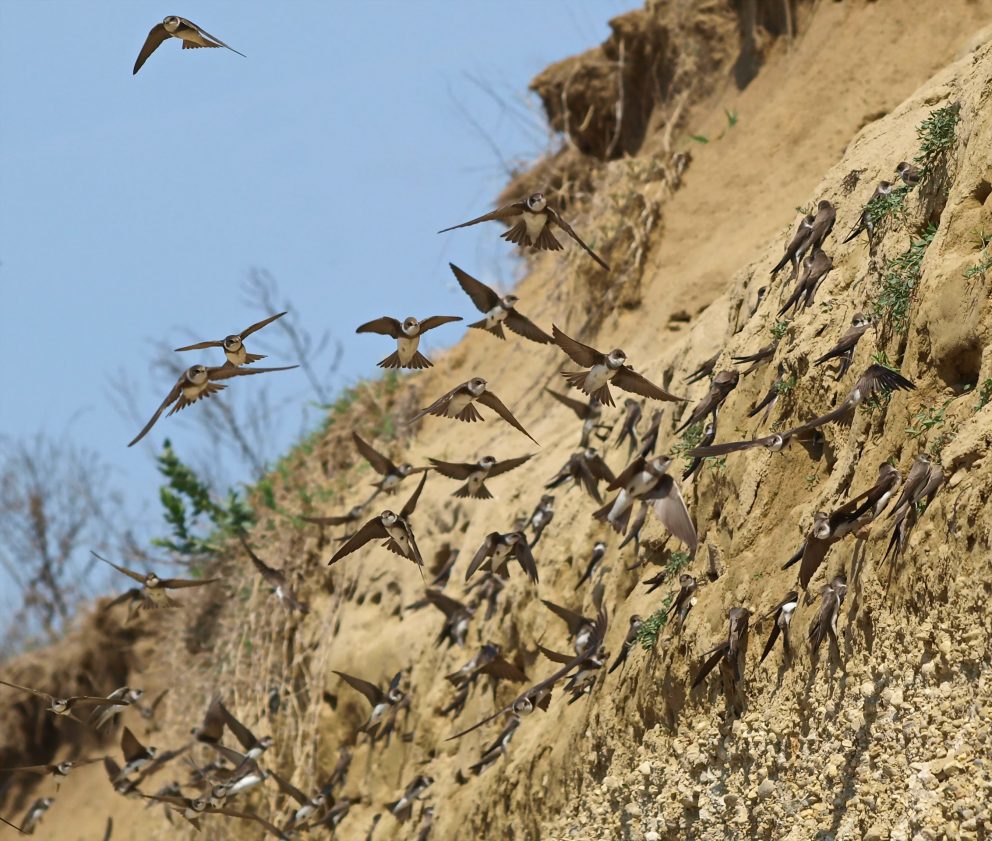- SCIENTIFIC NAME
- Riparia riparia
- CLASSIFICATION
- Bird
- LIFE SPAN
- 1-9 Years
- SIZE
- 4.7-5.5” | 0.04-0.05lbs
- STATE CONSERVATION STATUS
-
- Priority Species
- FEDERAL CONSERVATION STATUS
- Least Concern
- GAME STATUS
- Non-Game
- GAME TYPE
- None
- Washoe
- Humboldt
- Pershing
- Churchill
- Mineral
- Lyon
- Douglas
- Carson City
- Storey
- Elko
- Lander
- Eureka
- White Pine
- Esmeralda
- Nye
- Lincoln
- Clark
Habitat & Range
Bank Swallows are found primarily in Northern Nevada, but will migrate through Southern Nevada. They prefer habitat near water where they can build their nests. They are found in every continent except for Australia and Antarctica.
- Lakes and reservoirs
- Marsh
- Rivers and streams
Threats
- Habitat Degradation
- Habitat Loss
- Water Diversion
Natural History
Bank Swallow nests are excavated out of the muddy banks of rivers and streams by the males. They are colonial birds with colonies having up to 2,000 nests. Once the males have completed their nests, they will sit on the edge of the nest and sing as well as perform acrobatic flight displays to attract females. After a female has chosen a male and a nest site, they will begin to line the nest with soft materials like grasses and feathers.
Females lay one clutch per year with one to nine eggs in the clutch. Both parents will assist with incubating the eggs and caring for the hatchlings. Chicks will fledge after 20 days but will not become fully independent for a couple days after fledging.
They are aerial insectivores – they catch insects while in flight. They do most of their foraging over water and consume many different types of insects. They feed and migrate during the day and will often forage all day long.
Fun Facts














